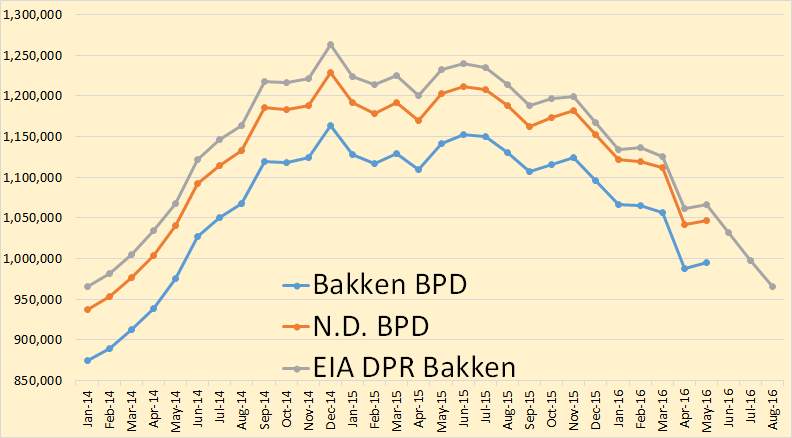The North Dakota Industrial Commission (NDIC) reported June crude plus condensate (C+C) output on August 12, 2016. North Dakota(ND) Bakken/Three Forks (BTF) output fell by 20.46 kb/d in June to 973.86 kb/d. Overall ND C+C output fell to 1026.58 kb/d in June, a decrease of 185.2 kb/d in the past 12 months. Based on data from Enno Peters, 43 new wells started producing oil in June 2016.
I pulled the charts below from shaleprofile.com (Enno Peter’s website).




